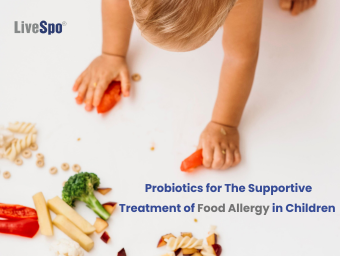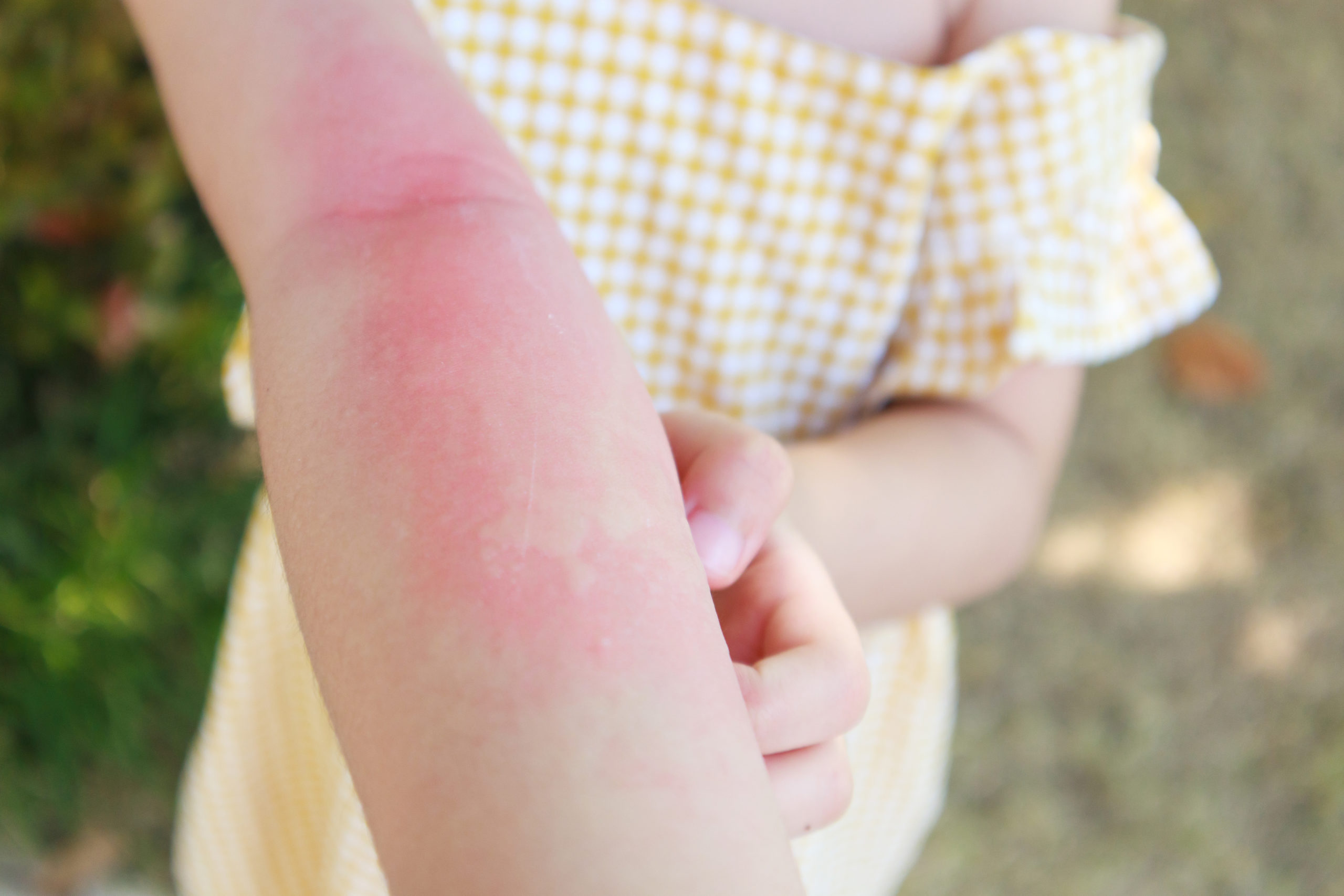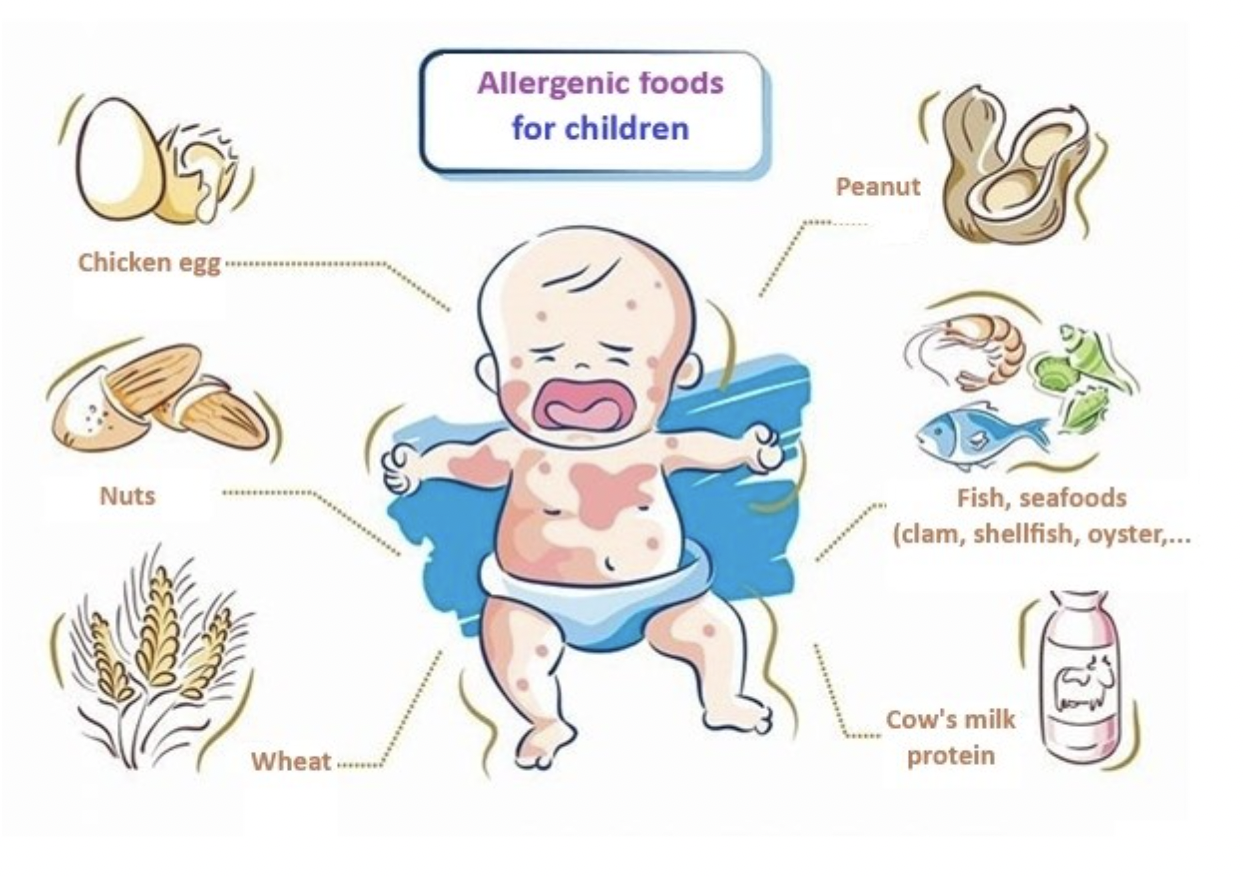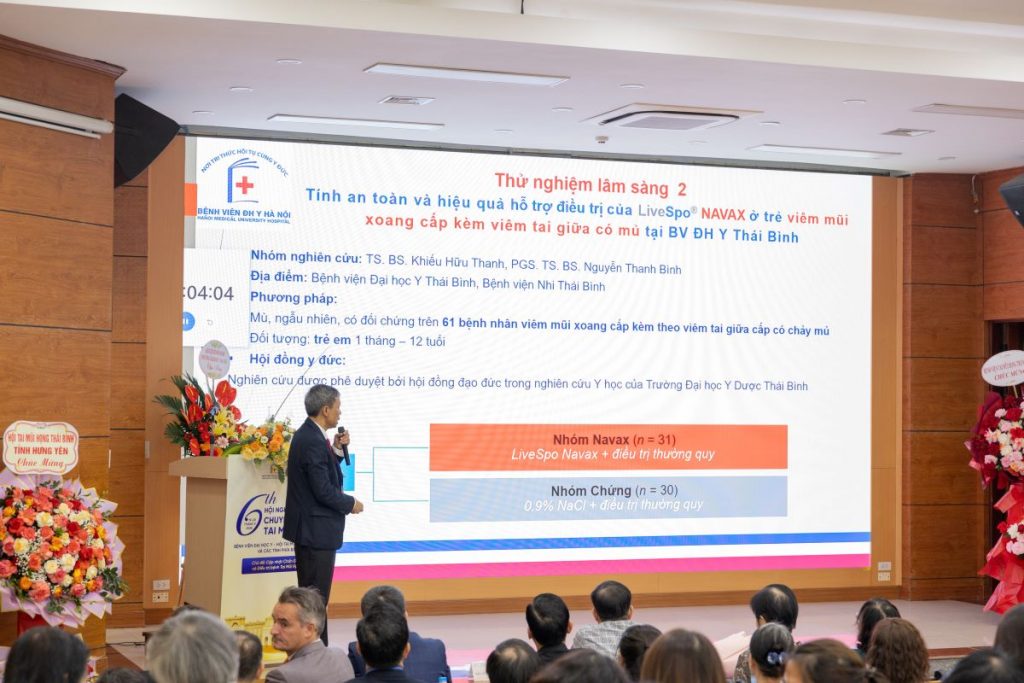What is Food Allergy?
Food allergy is defined as an “adverse health effect resulting from a specific immune response that occurs upon exposure to a particular food”. Allergenic substances in food are specific components recognized by an individual’s immune system, leading to excessive immune responses and causing characteristic allergic symptoms [1]. The most severe allergenic reaction with the potential for death is anaphylactic shock. Other mild allergic reactions include gastrointestinal symptoms such as vomiting, eating disturbances, acid reflux, abdominal pain, difficulty swallowing, diarrhea, and bloody stools. The skin manifestations include hives, angioedema, redness, itching, and eczema (Figure 1), along with respiratory symptoms such as wheezing, difficulty breathing, nasal congestion, sneezing, and runny nose [2].
Figure 1: Skin manifestations in children with food allergy
The ratio of food allergies is increasing worldwide, with a global ratio of 10% [1, 3]. The epidemiology of food allergies varies by age group and geographical location. Children have a higher rate of food allergies compared to adults. Allergies to crustaceans and shellfish (shrimp, crab, clams, oysters, etc.) are more common in Asian countries, while allergies to tree nuts and peanuts are more prevalent in Western countries. The commonly consumed foods can also trigger allergies in some individuals, including lactose-contained products such as cow’s milk or cheese, chicken eggs, and wheat [ 4 , 5 ] (Figure 2).
Figure 2: The common allergenic foods for children (source: https://bvndtp.org.vn/)
Although the burden of illness is high and the risk of death is latent, there is still no cure for food allergies. The management standard is to avoid allergenic substances and treat symptoms. For patients with cow’s milk allergy (CMA), cow’s milk protein is eliminated from the diet through extensively hydrolyzed protein formulas or amino acid-based formulas. Completely eliminating allergenic substances from food is often challenging because they are widely used in processed foods [2]. Definite treatment of food allergies, including various immunotherapeutic approaches, is still under extensive research [6].
How do probiotics help when it comes to food allergies?
The use of probiotics is proposed to be effective in supporting the prevention and treatment of food allergies. The Food and Agriculture Organization and the World Health Organization have defined probiotics as “live microorganisms that, when used in appropriate amounts, provide health benefits to the host” [7]. Allergenic relieving mechanism, modulation of local and systemic IgA production, and alteration of the anti-inflammatory cytokine profile, leading to the modulation of reactions to food antigens of probiotics is based on the hypothesis of local mast cell deactivation [8].
Commonly researched probiotic strains include Lactobacillus rhamnosus , L. reuteri , Bifidobacteria spp, L. casei , L. acidophilus , Bacillus coagulans , Escherichia coli Nissle 1917, Enterococcus faecium SF68 and Saccharomyces boulardii. Probiotics differ from prebiotics, prebiotics are refined fibers that confer health benefits to the host by regulating the microflora, stimulating the natural immune system, and reducing constipation. They belong to a diverse group of mostly indigestible carbohydrate components, with oligosaccharides being the most common form. Synbiotics are a combination of probiotics and prebiotics that are designed to work together to synergistically promote the host’s health. [9]
Although some studies show promise in using probiotics for the treatment of food allergies, the scientific evidence is still inconclusive and lacks strong persuasion [10]. Most systematic reviews on probiotics and food allergies have focused on the role of probiotics in preventive effect [11-15]. In 2015, the World Allergy Organization, in collaboration with McMaster University, created guidelines for preventing allergy use. The use of probiotics in infants at high risk of allergies is conditionally recommended because its true benefit is in preventing eczema; however, this recommendation is not widely applied due to the need for more rigorous scientific evidence [16].
References
- Boyce J.A., Assa’ad A., Burks A.W., Jones S.M., Sampson H.A., Wood R.A., et al. Guidelines for the diagnosis and Management of Food Allergy in the United States: summary of the NIAID-sponsored expert panel report. Nutr Res, 31 (1) (2011), pp. 61-75
- NowakWegrzyn A., Sampson H.A., Sicherer S.H., Kliegman R.M., Stanton B.F., St Geme J.W., Schor N.F. Food allergy and adverse reactions to foods. Nelson textbook of pediatrics 20th edition, Elsevier, Philadelphia (2016), pp. 1137-1143.
- Savage J., Johns C.B.Food allergy: epidemiology and natural history Immunol Allergy Clin N Am, 35 (1) (2015), pp. 45-59
- Lee A.J., Thalayasingam M., Lee B.W.. Food allergy in Asia: how does it compare?. Asia Pac Allergy, 3 (1) (2013), pp. 3-14
- Boye I. Food allergies in developing and emerging economies: need for comprehensive data on prevalence rates. Clin Transl Allergy, 2 (1) (2012), p. 25
- Yu W., Freeland D.M.H., Nadeau K.C. Food allergy: immune mechanisms, diagnosis and immunotherapy. Nat Rev Immunol, 16 (12) (2016), pp. 751-765
- Food and Agriculture Organization, World Health Organization. Guidelines for the evaluation of probiotics in food. In: Report of a joint FAO/WHO working group on drafting guidelines for the evaluation of probiotics in food. 2002. http://www.who.int/foodsafety/fs_management/en/probiotic_guidelines.pdf.
- Vandenplas Y., Huys G., Daube G. Probiotics: an update. J Pediatr, 91 (1) (2015), pp. 6-21
- Pandey K.R., Naik S.R., Vakil B.V. Probiotics, prebiotics and synbiotics – a review. J Food SciTechnol, 52 (12) (2015), pp. 7577-7587
- Sicherer S.H., Sampson H.A. Food allergy: epidemiology, pathogenesis, diagnosis, and treatment. J Allergy Clin Immunol, 133 (2) (2014), pp. 291-307
- Osborn D.A., Sinn J.K.H. Probiotics in infants for prevention of allergic disease and food hypersensitivity. Cochrane Database Syst Rev, 4 (2007), p. CD006475
- Kong X.Y., Yang Y., Guan J., Wang R.Z. Probiotics’ preventive effect on pediatric food allergy: a meta-analysis of randomized controlled trials. Chin Med Sci J, 29 (3) (2014), pp. 144-147
- Zhang G.Q., Hu H.J., Liu C.Y., Zhang Q., Shakya S., Li Z.Y. Probiotics for prevention of atopy and food hypersensitivity in early childhood: a PRISMA-compliant systematic review and meta-analysis of randomized controlled trials. Medicine (Baltimore), 95 (8) (2016)
- Tang L.J., Chen J., Shen Y. Meta-analysis of probiotics preventing allergic diseases in infants. Zhonghua Er Ke Za Zhi, 50 (7) (2012), pp. 504-509
- Mugambi MN, Musekiwa A, Lombard M, Young T, Biaauw R. Synbiotics, probiotics or prebiotics in infant formula for full-term infants: a systematic review. Nutr J. 2012;11:81. http://sci.hub.tw/10.1186/1475-2891-11-81.
- Fiocchi A., Pawankar R., Cuello-Garcia C., Ahn K., Al-Hammadi S., Agarwal A., et al. World Allergy organization-McMaster University guidelines for allergic disease prevention (GLAD-P): probiotics. World Allergy Organ J, 8 (1) (2015), p. 4







